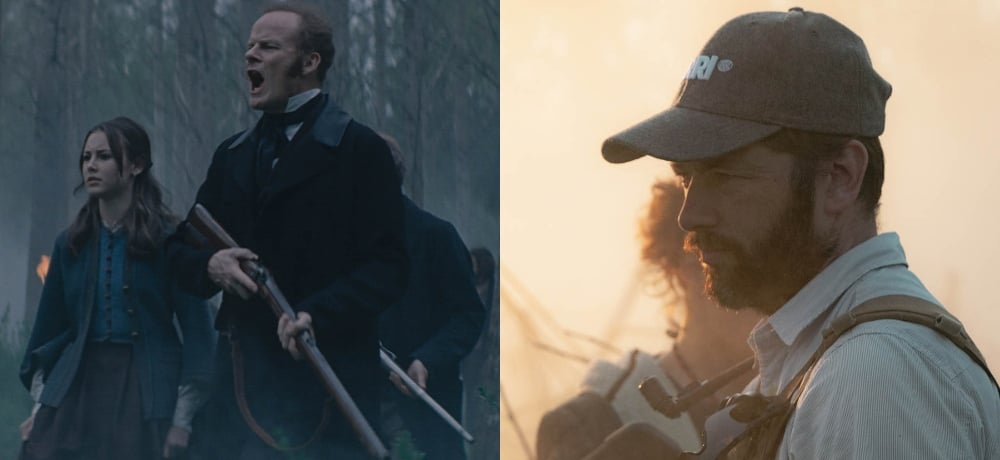


This past weekend, writer/director Sean Ellis celebrated the world premiere of his latest project, Eight for Silver, at the 2021 Sundance Film Festival. The film transports viewers back to the 19th century as a group of wealthy landowners slaughters a clan of Roma gypsies, which leads to unfathomable repercussions involving a cursed item that transforms its victim into a bloodthirsty creature. Eight for Silver stars Boyd Holbrook, Kelly Reilly, and Alistair Petrie.
Daily Dead recently had the opportunity to speak with Ellis about Eight for Silver, and he discussed his approach to the story for his historical horror film, and why he wanted to blend fact and fiction for the project. Ellis also chatted about how elements of Eight for Silver are still relevant today and working with his cast as well.
Great to speak with you today, Sean. In Eight for Silver, you're dealing with fantastic elements here, but the story is still grounded in reality, in terms of the time period and the experiences of these people who were living during that time. Can you discuss how this story came about in terms of wanting to explore this timeframe in particular, but using horror elements as well?
Sean Ellis: I wanted it to be grounded in reality and it be a serious piece, so I linked some historical facts into the story. I quite like it when you get to mix facts with fiction. We've got the WWI opening, and I really liked the idea that it then goes into this fictional story based around one of the characters in that scene. I also incorporated the Beast of Gévaudan, which was a wolf that preyed the French countryside. The army had been called in to capture the wolf, but they were never sure whether they actually caught the wolf that killed all these people, or if, in fact, whether it was a wolf at all. There were reports that people just used it as an excuse to kill their neighbors and leave them in the woods and say it was a wolf. But ultimately, I thought it would be interesting to do something that mixed fact and fiction. I think when you can do that, it always gives the material a solid believable base, and I think that it also helps you believe the other more fantastical elements within the story.
Another element you explore here is this culture clash with the group of gypsies that parlays into the real-life horror of that time period between these communities. Was there a reason you wanted to explore that dynamic here? It feels oddly timely in a way to me.
Sean Ellis: It definitely mirrors what's happening now and how we have war refugees crossing borders and there are high levels of xenophobia towards them. I felt that land and religion are these things that always seem to create wars and they have always been this thing that people fight over. I just felt like it's something that is still going on today and we still haven't fixed it. So, I felt like it would be a very poignant part of the story, but I do think it's also important to see that the Romanian gypsies were not the bad guys. And they weren't just all traveling gypsies and taking up the land. In this story, they obviously had a claim to that land, but the powers that be wanted to hang on to that land and they weren't going to let it go. And so it ends in violence, as it often does, and then you're into the cycle of violence because violence always creates more violence.
With your casting for Eight for Silver, what was it that you saw in Kelly and Boyd, in terms of what they brought to their roles? I thought they were both really great and their characters become the heart of this story.
Sean Ellis: When you have the script and that's the foundation for what you're working towards achieving, all you’re really hoping for is to find actors who are going to make the script better. And Boyd, Kelly and even Alister were all just so brilliant at actually getting into that reality and not only being in that reality, but inhabiting it so that their questions and suggestions and their ideas formed what the movie would become because of that reality that they're in. A lot of it obviously comes from the fact that they're all brilliant actors, but it also comes from really giving them as much room to work as possible, and support what they were doing. That means everything from the costumes they're wearing to the props that they're holding to the location we shot at. As a director, your job is to try and create a bubble for them to really live in the character. The script is the stepping-off point and the hard work starts when you're on the floor with the actors.
----------
Visit our online hub to catch up on all of our Sundance interviews and reviews!
[Photo Credits: Above photo from Eight for Silver courtesy of Sean Ellis/Sundance Institute, above photo of Sean Ellis courtesy of Jacob Yakob/Sundance Institute.]